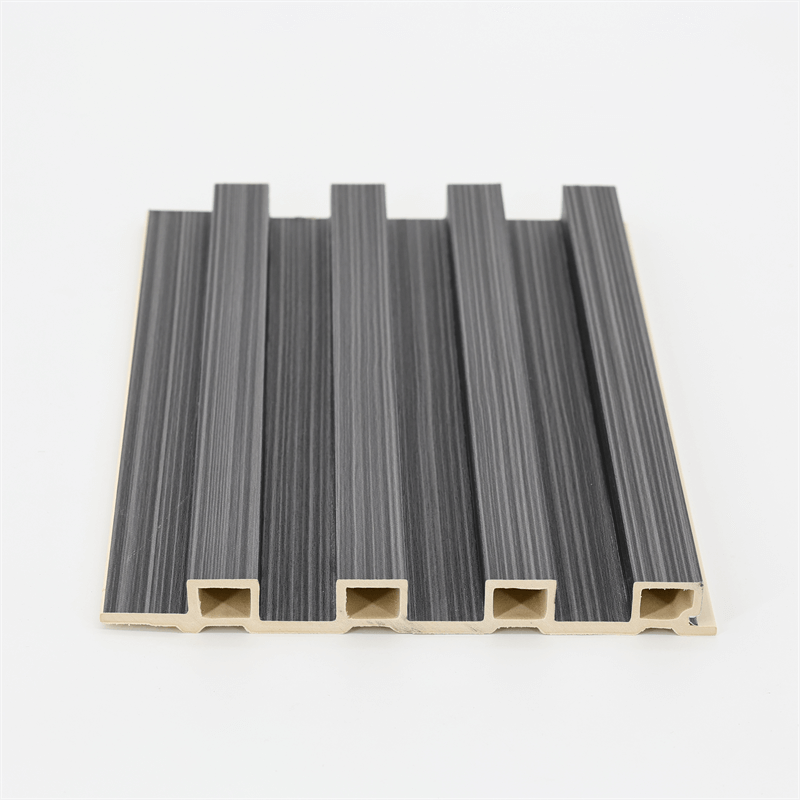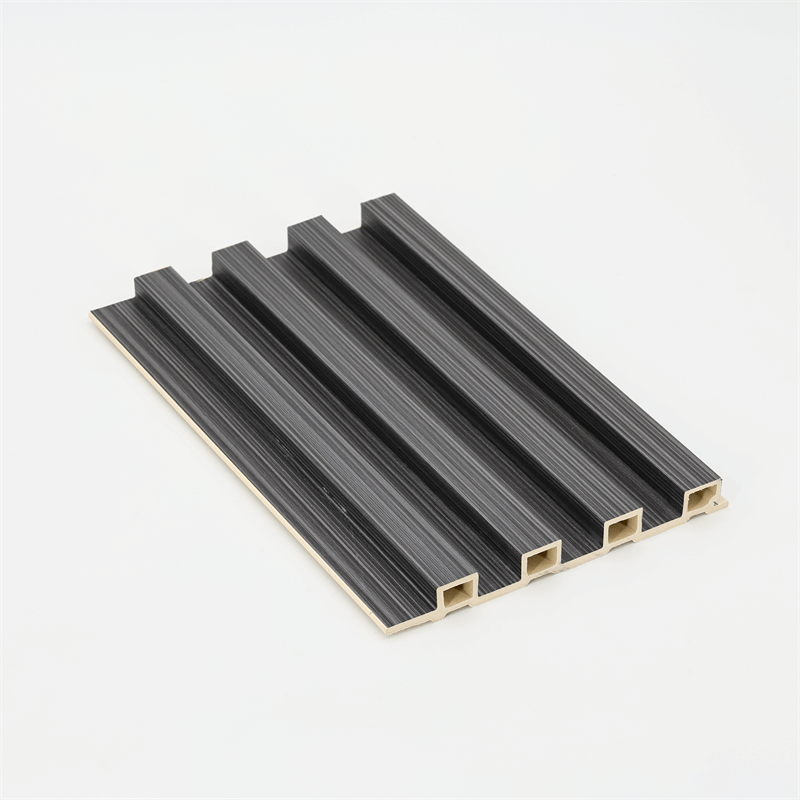When it comes to wall cladding, there are various options available, ranging from traditional materials like wood, brick, and stone to more modern alternatives such as WPC (Wood Plastic Composite) wall panels.
This essay aims to provide a comparative analysis of WPC wall panels and traditional wall cladding materials, examining their respective characteristics, advantages, and limitations.
By understanding the differences between these options, architects, designers, and homeowners can make informed decisions when selecting the most suitable material for their projects.
I. Material Composition and Durability
The first aspect to consider is the material composition and durability of WPC wall panels compared to traditional wall cladding materials.
WPC panels are typically made from a combination of recycled wood fibers and plastic resin, resulting in a material that offers excellent durability and resistance to rot, decay, and insect damage.
In contrast, traditional materials like wood, brick, or stone may require regular maintenance, such as sealing, painting, or repairing, to ensure their longevity.
WPC panels have the advantage of being resistant to warping, cracking, and splintering, which can commonly occur with natural wood cladding.
Additionally, WPC panels are not prone to fading or discoloration, maintaining their appearance over time.
However, traditional materials such as stone or brick provide a timeless aesthetic appeal and may be more suitable for certain architectural styles or heritage buildings.
II. Installation and Versatility
The ease of installation and versatility of wall cladding materials are important factors to consider.
WPC wall panels offer a relatively simple installation process, with options for both vertical and horizontal applications.
These panels can be easily cut, shaped, and installed using standard woodworking tools, allowing for flexibility in design implementation.
Moreover, WPC panels come in a range of colors, textures, and finishes, offering versatility in achieving various aesthetic effects.
On the other hand, traditional wall cladding materials may require specialized skills and techniques for installation.
Stone cladding, for example, requires professional masonry work and can be time-consuming and costly.
Brick cladding involves laying individual bricks and requires precise measurements and expertise.
While traditional materials offer their own unique beauty and charm, the installation process can be more complex and demanding compared to WPC panels.
III. Maintenance and Long-Term Costs
Maintenance requirements and long-term costs are crucial considerations when selecting wall cladding materials.
WPC wall panels have the advantage of being virtually maintenance-free.
They do not require staining, sealing, or painting, unlike traditional wood cladding, which requires periodic treatments to protect against weathering and decay.
Cleaning WPC panels simply involves periodic washing with water and mild soap to remove dirt and debris.
In contrast, traditional materials may require regular maintenance and repairs to maintain their appearance and performance.
Natural wood cladding may require staining or painting every few years, while stone or brick cladding may require cleaning and sealing to prevent staining or weather damage.
These maintenance activities can add up over time, increasing the long-term costs associated with traditional wall cladding materials.
IV. Environmental Impact and Sustainability
In an era where sustainability is increasingly valued, considering the environmental impact of wall cladding materials is essential.
WPC wall panels offer a more sustainable option compared to traditional materials.
By utilizing recycled wood fibers and plastic resin, WPC panels contribute to waste reduction and minimize the demand for virgin materials.
Additionally, the manufacturing process of WPC panels consumes less energy and emits fewer greenhouse gases compared to the production of traditional materials.
In contrast, traditional wall cladding materials often require the extraction of natural resources, such as timber, stone, or clay, contributing to deforestation and environmental degradation.
Furthermore, the production of traditional materials may involve more energy-intensive processes, leading to higher carbon emissions.
While the natural aesthetics of traditional materials may appeal to some, the environmental benefits of WPC panels make them a sustainable choice for those seeking to reduce their ecological footprint.
In conclusion, the comparative analysis of WPC wall panels and traditional wall cladding materials highlights the distinctive characteristics, advantages, and limitations of each option.
WPC panels offer excellent durability, low maintenance requirements, ease of installation, versatility in design, and environmental sustainability.
They are a practical and sustainable alternative to traditional materials, especially for those seeking a low-maintenance and eco-friendly solution.
However, traditional materials like wood, stone, and brick provide a timeless and authentic aesthetic appeal that may be preferred for specific architectural styles or heritage buildings.
Ultimately, the choice between WPC wall panels and traditional wall cladding materials depends on the project’s requirements, design objectives, and personal preferences.
By carefully considering the material composition, durability, installation process, maintenance requirements, long-term costs,
and environmental impact, architects, designers, and homeowners can select the most suitable option that aligns with their vision, budget, and sustainability goals.
V. Aesthetic Appeal and Design Possibilities
Aesthetic appeal and design possibilities are crucial factors when considering wall cladding materials.
WPC wall panels offer a range of design options and can mimic the look of natural wood, providing a warm and inviting ambiance.
These panels are available in various colors, textures, and finishes, allowing architects and designers to achieve different styles and aesthetics.
From contemporary to rustic, WPC panels can be tailored to suit a wide range of architectural designs.
On the other hand, traditional wall cladding materials have their own unique charm and character.
Natural wood cladding exudes a timeless elegance and a sense of warmth, while stone cladding provides a solid and enduring appearance.
Brick cladding offers a classic and traditional look that is often associated with historical or heritage buildings.
The choice between WPC panels and traditional materials depends on the desired aesthetic and the architectural context in which they will be used.
VI. Insulation Properties
Insulation properties are important considerations in wall cladding materials, as they impact energy efficiency and comfort levels within buildings.
WPC wall panels offer good thermal insulation, helping to regulate indoor temperatures and reduce energy consumption.
The combination of wood fibers and plastic resin in WPC panels creates a material that acts as a barrier against heat transfer, keeping the interior cool in summer and warm in winter.
Traditional wall cladding materials, such as stone or brick, have inherent thermal mass properties.
They can absorb and store heat, providing a natural cooling effect in hot climates. However, without additional insulation,
these materials may allow heat to escape during colder months, resulting in higher energy usage for heating.
By contrast, WPC panels offer consistent insulation properties, contributing to energy efficiency and reducing heating and cooling costs.
VII. Fire Resistance and Safety
Fire resistance and safety are critical factors to consider in wall cladding materials, especially in commercial and residential buildings.
WPC wall panels are manufactured with fire-retardant additives, making them inherently resistant to flames and limiting the spread of fire.
This feature provides valuable time for evacuation and reduces the risk of property damage.
Additionally, WPC panels release less smoke and toxic fumes when exposed to fire, improving occupant safety.
Traditional materials like wood, although visually appealing, can be highly flammable and contribute to the rapid spread of fire.
Stone and brick cladding offer better fire resistance than wood but may still require additional fireproofing measures.
When prioritizing fire safety, WPC wall panels provide a reliable and safer option.
In conclusion, the comparative analysis of WPC wall panels and traditional wall cladding materials highlights the advantages and considerations for each option.
WPC panels offer durability, low maintenance, easy installation, design versatility, insulation properties, fire resistance, and sustainability.
They provide a contemporary and eco-friendly solution for modern architecture.
However, traditional materials offer their own unique aesthetic appeal, authenticity, and thermal mass properties.
The choice between WPC panels and traditional materials depends on factors such as the desired aesthetic, project requirements, maintenance preferences, insulation needs, and fire safety considerations.
Architects, designers, and homeowners must carefully evaluate these factors to determine the most suitable wall cladding material for their projects.
Whether it is the eco-friendliness and versatility of WPC panels or the timeless beauty and inherent characteristics of traditional materials,
the selection should align with the project’s objectives, design vision, and sustainability goals.



